Thingiverse
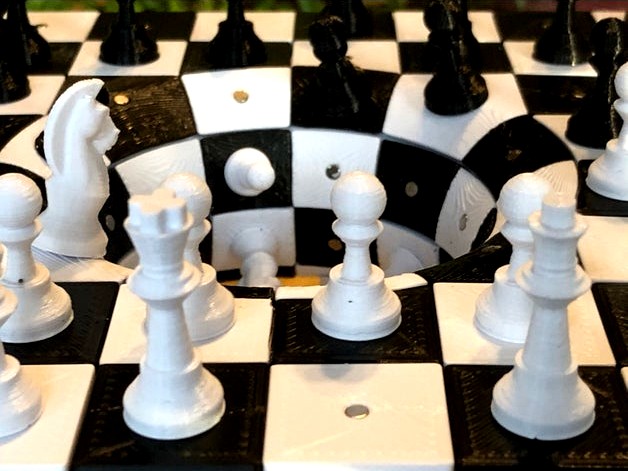
Non-Euclidean Chess Board (Wormhole) by DaveMakesStuff
by Thingiverse
Last crawled date: 3 years, 4 months ago
This “Wormhole Chess Board” is composed of two back-to-back regular sized chess boards connected by a catenoid surface through the central 4 x 4 grid of squares on each board.
Actual game play on this board is beyond challenging so unless you’re a genius, this board is more of an art or conversation piece.
Part of what makes game play so challenging is the presence of the eight pentagons that are required to transition between the flat and curved surfaces.
Here are a few suggestions if you want to try playing.
Moving a piece through a pentagon allows for additional movement options. When entering from a column or row on the flat surface (such as with a rook) there are two exit options, one that allows the piece to remain on the flat surface and another that allows the piece to enter the wormhole. The reverse is true when entering a pentagon from the wormhole. When entering a pentagon from a diagonal (such as with a bishop) there are two options for exiting the pentagon, both of which allow the piece to remain on its own colour.
The model above shows two separate sets of pieces for each player, facing each other across the flat surface as well as through the curved surface. This means that there are two kings, which complicates the end game somewhat!
Another option would be to play as a four-player game with each set of pieces a different colour.
If anyone comes up with a comprehensive set of rules for incorporating the pentagons into game play, please share them!
Here are printing and assembly instructions:
For the board, print two of each of the “Flat Board Half” and “Wormhole Half” files. No supports needed. Glue together carefully.
For the square, you will need a total of 4 “Quadrant of Squares” for each colour. Note that there are small reference dimples on the bottom of the curved pieces. When properly positioned, the dimples will point towards the pentagonal piece.
Playing pieces are remixed from “Mini Chess for Altoid Box” by “humphrey_b52.” Holes have been added for 1/8” by 1/8” cylindrical magnets. Note that these pieces are scaled smaller than those sets provided for my other “Spherical” and “Hyperbolic Paraboloid” chess boards. The small size is necessary so that the pieces don’t collide when passing side-by-side through the wormhole.
You will need a total of 208 1/8” cylindrical magnets, one for each board piece and each playing piece (assuming you’re using two full sets of playing pieces). This model uses 1/8” length magnets, but 1/16” length would probably work fine.
Insert the magnets into the square tiles before gluing them on to the frame. Make sure you get the polarity right so that all the pieces stick to all the squares! The magnets used in the design and assembly of this model were purchased through www.kjmagnetics.com.
Once you’ve inserted the magnets and determined the correct orientation of each piece, go ahead and glue them in place. CA glue works well.
See here for video of Wormhole Chess Board: https://youtu.be/UFoCcFtPEvw
See here for a spherical board: https://www.thingiverse.com/thing:4643035
hyperbolic paraboloid board: https://www.thingiverse.com/thing:4647738
And "print in place" chess set: https://www.thingiverse.com/thing:4689389
Actual game play on this board is beyond challenging so unless you’re a genius, this board is more of an art or conversation piece.
Part of what makes game play so challenging is the presence of the eight pentagons that are required to transition between the flat and curved surfaces.
Here are a few suggestions if you want to try playing.
Moving a piece through a pentagon allows for additional movement options. When entering from a column or row on the flat surface (such as with a rook) there are two exit options, one that allows the piece to remain on the flat surface and another that allows the piece to enter the wormhole. The reverse is true when entering a pentagon from the wormhole. When entering a pentagon from a diagonal (such as with a bishop) there are two options for exiting the pentagon, both of which allow the piece to remain on its own colour.
The model above shows two separate sets of pieces for each player, facing each other across the flat surface as well as through the curved surface. This means that there are two kings, which complicates the end game somewhat!
Another option would be to play as a four-player game with each set of pieces a different colour.
If anyone comes up with a comprehensive set of rules for incorporating the pentagons into game play, please share them!
Here are printing and assembly instructions:
For the board, print two of each of the “Flat Board Half” and “Wormhole Half” files. No supports needed. Glue together carefully.
For the square, you will need a total of 4 “Quadrant of Squares” for each colour. Note that there are small reference dimples on the bottom of the curved pieces. When properly positioned, the dimples will point towards the pentagonal piece.
Playing pieces are remixed from “Mini Chess for Altoid Box” by “humphrey_b52.” Holes have been added for 1/8” by 1/8” cylindrical magnets. Note that these pieces are scaled smaller than those sets provided for my other “Spherical” and “Hyperbolic Paraboloid” chess boards. The small size is necessary so that the pieces don’t collide when passing side-by-side through the wormhole.
You will need a total of 208 1/8” cylindrical magnets, one for each board piece and each playing piece (assuming you’re using two full sets of playing pieces). This model uses 1/8” length magnets, but 1/16” length would probably work fine.
Insert the magnets into the square tiles before gluing them on to the frame. Make sure you get the polarity right so that all the pieces stick to all the squares! The magnets used in the design and assembly of this model were purchased through www.kjmagnetics.com.
Once you’ve inserted the magnets and determined the correct orientation of each piece, go ahead and glue them in place. CA glue works well.
See here for video of Wormhole Chess Board: https://youtu.be/UFoCcFtPEvw
See here for a spherical board: https://www.thingiverse.com/thing:4643035
hyperbolic paraboloid board: https://www.thingiverse.com/thing:4647738
And "print in place" chess set: https://www.thingiverse.com/thing:4689389
Similar models
thingiverse
free

Non-Euclidean Chess Board (Hyperbolic Paraboloid) by DaveMakesStuff
...rd: https://www.thingiverse.com/thing:4655805
and "print in place" chess set: https://www.thingiverse.com/thing:4689389
thingiverse
free
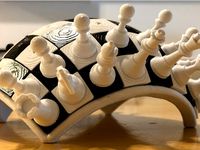
Non-Euclidean Chess Board (Sphere) by DaveMakesStuff
...rd: https://www.thingiverse.com/thing:4655805
and "print in place" chess set: https://www.thingiverse.com/thing:4689389
thingiverse
free

Hyperbolic Paraboloid by AGPapa
...ines demonstrates the doubly ruled nature of hyperbolic paraboloids. i made this seemingly complex object from very simple rules.
3dwarehouse
free

Circular chess
...ch of sixteen squares. this is topologically equivalent to playing on the surface of a cylinder. #chess #circular #circular chess
3dwarehouse
free

Hyperbolic Paraboloid
...hyperbolic paraboloid
3dwarehouse
hyperbolic paraboloid over a square domain #hyperbolic #paraboloid
thingiverse
free

Super Simple Chess and Checkers Set (SSCCS) by FilamentCorner
...set falls in-between the pawn and king.
i made a video showing everything off here: https://www.youtube.com/watch?v=lyeiuanop1o
thingiverse
free

Full Chess Set by BeyondAwesome
... of each colour)
->4 bishops (2 of each colour)
->2 queens (1 of each colour)
->2 kings (1 of each colour)
have fun!!!!
thingiverse
free

Lanier Graham Modified Chess Set by flyboysgu
... pieces: print one set for white and one set for black. they also have magnet holes to hold them to the board during game play.
cg_trader
$5

CHESS-SET
...ishops, two knights and eight pawns. chess equipment often accompanying a chess set are a chess box, chess clock and chess table.
3dwarehouse
free

Quatrochess
...nine fairy pieces. the game can be played in partnership (two opposing teams of two) or all-versus-all. #chess #four #quatrochess
Euclidean
thingiverse
free

Euclidean Egg
...king it %100 infill will give better results. because of the thin frames of it. you can also expand its sizes for better results.
thingiverse
free

Euclidean Algorithm - Pendant / Earring Set GCD - Geometry - Math Art by Midwesterner
...en purposefully separated to distinguish between the denominators. these were painted silver after printing. thanks for looking!
thingiverse
free

Non Euclidean Lp spheres by tato_713
...king these models, letting them available and free for everyone. if you want to support my work, you can contribute with me here:
thingiverse
free

Platonic solid in Euclidean geometry / Platonische Koerper by nischi
...olidhttp://de.wikipedia.org/wiki/platonischer_k%c3%b6rper
see also this making of:http://www.ichdruck3d.de/platonische-koerper/
thingiverse
free

Non-Euclidean Chess Board (Sphere) by DaveMakesStuff
...rd: https://www.thingiverse.com/thing:4655805
and "print in place" chess set: https://www.thingiverse.com/thing:4689389
thingiverse
free

Euclidean Shards - Fraction Prism Math Manipulative by wingchi
... measurements because they are all fractions of a foot/12 inches.
the shards are stackable and the design files include a case.
thingiverse
free

3D Coordinate Plane
...thingiverse this is a hands-on manipulative for understanding the euclidean three-dimensional coordinate...
thingiverse
free

Geometric Earrings by Kayiilu
...] these three pairs of earrings represent euclidean geometry, non-euclidean geometry - including hyperbolic geometry & spherical geometry. i...
thingiverse
free

Non-Euclidean Chess Board (Hyperbolic Paraboloid) by DaveMakesStuff
...rd: https://www.thingiverse.com/thing:4655805
and "print in place" chess set: https://www.thingiverse.com/thing:4689389
Davemakesstuff
thingiverse
free

Pointer by DaveMakesStuff
... pointing at things.
sections screw apart for compact storage and transport. rods are 10cm long, print whatever length you need.
thingiverse
free

Gyroid Sculpture with Oval Profile by DaveMakesStuff
...roid/. it can be purchased at: https://www.shapeways.com/designer/davemakesstuff
see here for video: https://youtu.be/wcjtddytqi0
thingiverse
free

Corona Pumpkin by DaveMakesStuff
...#39;ll probably end up with a headache and fever.
here's a better one for printing: https://www.thingiverse.com/thing:4620382
thingiverse
free
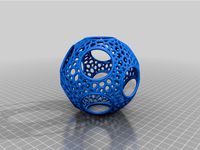
Voronoi Rhombic Dodecahedron Sphere by DaveMakesStuff
... in this sphere are centered on the faces of a rhombic dodecahedron. connecting multiple spheres hole-to-hole will tile 3d space.
thingiverse
free

Hextuple Klein Bottle by DaveMakesStuff
...hat it takes a long time to print, the good news is that it prints without supports.
see video here: https://youtu.be/zcb6e3u87qm
thingiverse
free
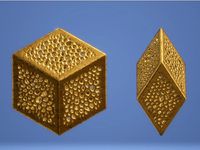
Golden Rhombohedra by DaveMakesStuff
...
see here for christmas ornament versions: https://www.thingiverse.com/thing:4577036
see video here: https://youtu.be/odaqybfys84
thingiverse
free

Three Voronoi Gyroid Spheres by DaveMakesStuff
...rnal structures and edge boundary. files are provided with and without supports.
see here for video: https://youtu.be/lunhqfodetm
thingiverse
free

Golden Rhombohedra Ornaments by DaveMakesStuff
...s are separate shells that can be removed by your mesh editing software if you wish.
see video here: https://youtu.be/odaqybfys84
thingiverse
free
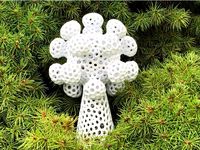
Coronavirus Tree Topper by DaveMakesStuff
...ole object is also provided for you to print as you wish.
see here for a plain ornament:https://www.thingiverse.com/thing:4321410
thingiverse
free

Boy's Bowl by DaveMakesStuff
...pasta :)
boy's surface on wikipedia:https://en.wikipedia.org/wiki/boy%27s_surface
see video here:https://youtu.be/x6b0zxcwoye
Wormhole
turbosquid
free

Wormhole Table
...ree 3d model wormhole table for download as max, obj, and fbx on turbosquid: 3d models for games, architecture, videos. (1211280)
turbosquid
$99

Wormhole Willy
... available on turbo squid, the world's leading provider of digital 3d models for visualization, films, television, and games.
cg_studio
$25

Wormhole Gateway Model3d model
...model
cgstudio
.mb .fbx .c4d - wormhole gateway model 3d model, royalty free license available, instant download after purchase.
turbosquid
$50

Twist Wormhole Column(1)
... available on turbo squid, the world's leading provider of digital 3d models for visualization, films, television, and games.
3d_ocean
$4

Rough Planks 1
...planks 1 3docean nails old rough splintered weathered wood wormhole worn a seamless texture of rough wooden planks with...
3d_ocean
$4

Rough Planks 3
...seamless texture of rough wooden planks with nails and wormhole. included are diffuse, bump, normal and ambient occlusion...
3d_ocean
$3

Rough Wood 5
...cracks log rough seamless texture tileable timber weathered wood wormhole a seamless tileable texture with diffuse, bump, normal and...
3d_ocean
$3

Rough Wood 4
...cracks log rough seamless texture tileable timber weathered wood wormhole a seamless tileable texture with diffuse, bump, normal and...
3d_export
$10

Stargate 3D Model
...gate future sci fi fantasy alien space planet travel wormhole military army secret stargate 3d model juliokron 92867...
thingiverse
free

Wormhole by Opunakeprimary
...wormhole by opunakeprimary
thingiverse
wormhole
Chess
3ddd
free
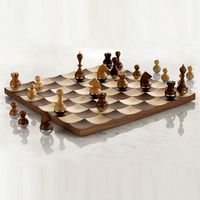
Chess
...chess
3ddd
chess , шахматы
chess
3d_ocean
$6

chess
...chess
3docean
chess game
chess,game
3d_export
$5

chess
...chess
3dexport
chess
3d_export
$5

chess
...chess
3dexport
chess
3d_ocean
$6

Chess
...chess
3docean
chess decor design elements game interior
just chess
3d_export
$5
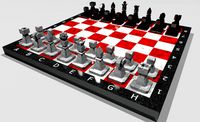
chess
...chess
3dexport
chess modern
3d_export
$5

the chess
...the chess
3dexport
the chess board.
3d_export
free

chess
...chess
3dexport
3d model chess
3d_export
$15

chess
...chess
3dexport
chess complete set with 32 pieces and a board
3d_export
$5
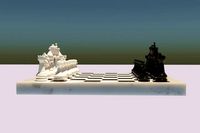
chess
...chess
3dexport
marble chess with ceramic figures, great for interior decoration
Non
3ddd
free
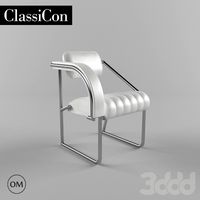
ClassiCon Non Conformist
...classicon non conformist
3ddd
classicon
classicon non conformist modern armchair
design_connected
$16

Non Random Lights
...non random lights
designconnected
moooi non random lights computer generated 3d model. designed by pot, bertjan.
turbosquid
$30
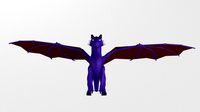
Non realistic dragon
...odel non realistic dragon for download as obj, fbx, and blend on turbosquid: 3d models for games, architecture, videos. (1314055)
turbosquid
$13

Spaceship non-textured
...del spaceship (non-textured) for download as ma, fbx, and obj on turbosquid: 3d models for games, architecture, videos. (1597654)
turbosquid
$69

Businessman (Non-Rig)
... available on turbo squid, the world's leading provider of digital 3d models for visualization, films, television, and games.
turbosquid
$10

non face monster
... available on turbo squid, the world's leading provider of digital 3d models for visualization, films, television, and games.
turbosquid
$4

Non-Textured HoverTank
... available on turbo squid, the world's leading provider of digital 3d models for visualization, films, television, and games.
turbosquid
$3

Sofa non textured
... available on turbo squid, the world's leading provider of digital 3d models for visualization, films, television, and games.
turbosquid
$3

Lamp non textured
... available on turbo squid, the world's leading provider of digital 3d models for visualization, films, television, and games.
turbosquid
$2

Barrel non textured
... available on turbo squid, the world's leading provider of digital 3d models for visualization, films, television, and games.
Board
archibase_planet
free
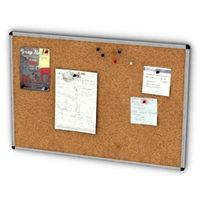
Board
...e planet
board information board bulletin board
board information n310813 - 3d model (*.gsm+*.3ds) for interior 3d visualization.
archibase_planet
free
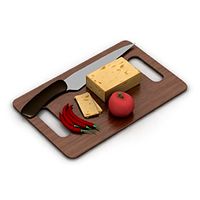
Board
...board
archibase planet
board cutting board kitchen ware
board n051011 - 3d model (*.gsm+*.3ds) for interior 3d visualization.
archibase_planet
free

Board
...board
archibase planet
board blackboard school board
board school n290114 - 3d model (*.gsm+*.3ds) for interior 3d visualization.
archibase_planet
free

Board
...board
archibase planet
slate board
board - 3d model (*.gsm+*.3ds) for interior 3d visualization.
archibase_planet
free

Board
...board
archibase planet
blackboard board school furniture
board - 3d model for interior 3d visualization.
archibase_planet
free
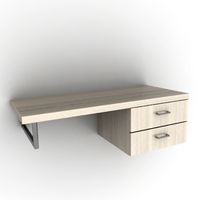
Board
...board
archibase planet
board shelf stand
board - 3d model (*.gsm+*.3ds) for interior 3d visualization.
archibase_planet
free
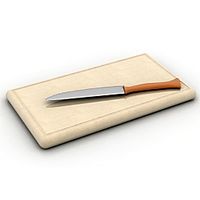
Board
...board
archibase planet
kitchen ware board
board - 3d model (*.gsm+*.3ds) for interior 3d visualization.
archibase_planet
free
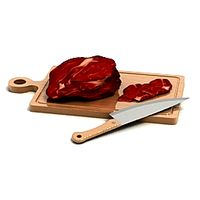
Board
...board
archibase planet
kitchen ware board
board n150410 - 3d model (*.gsm+*.3ds) for interior 3d visualization.
archibase_planet
free
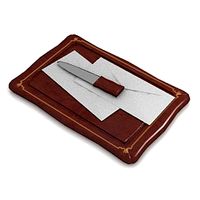
Board
...board
archibase planet
board office supplies stationery
board - 3d model (*.gsm+*.3ds) for interior 3d visualization.
archibase_planet
free

Board
...board
archibase planet
board gym
board evminov n240613 - 3d model (*.gsm+*.3ds) for interior 3d visualization.
